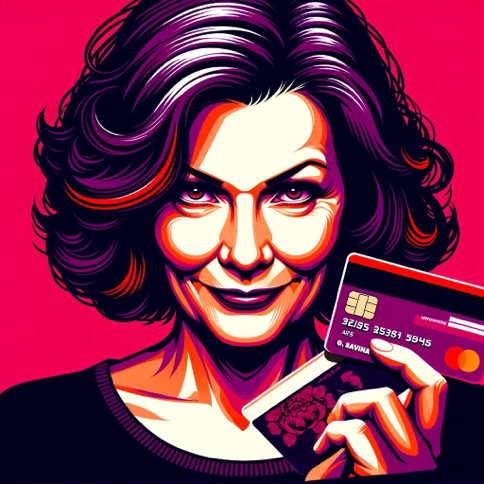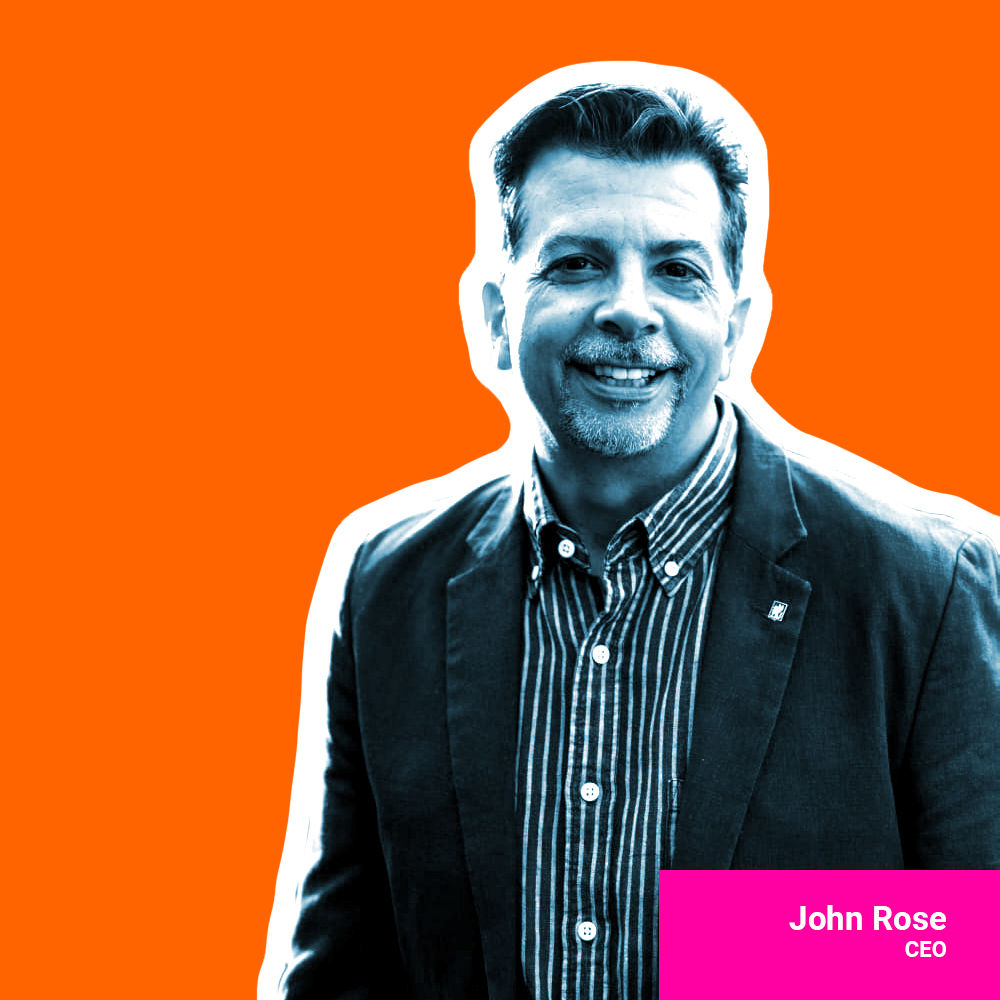
The Boomer Blind Spot
If Baby Boomers Are the Biggest Spenders Online, Why Are Marketers So Focused on Youth?
While most brands are chasing the “digital natives”, the real goldmine in today’s marketplace may be a group that’s been right under advertisers’ noses the whole time: the Baby Boomers. While marketing trends have been busy wooing Millennials and Gen Z with flashy digital campaigns, they’ve glossed over a critical fact: Baby Boomers, those born between 1946 and 1964, are not just online—they’re wielding substantial spending power across the board. Yet, surprisingly, this demographic finds itself sidelined in many marketing strategies and most advertising, from billboards to banner ads.
However, new research reveals some eye-opening insights: Boomers are the biggest online shoppers; backed by an average disposable income that dwarfs that of their younger counterparts. Despite this, there’s a glaring gap in how marketing campaigns are targeted, with Boomers often feeling invisible in the current advertising landscape.
Why this glaring misstep? Why are marketers overlooking a demographic ripe for engagement? There may be many reasons. It could simply be the result of a disconnect between sales and marketing. But often it may be the result of the marketing team viewing its strategy through a limited lens or adhering to an antiquated set of metrics that discounts older consumers. It could be because most marketers have been taught that brand loyalty is entrenched with older consumers and that our attention should be focused on more malleable younger consumers. Also, brands naturally fear an aging (and therefore, diminishing) demographic and gravitate to new/young consumers to prove their relevance. Or conversely, perhaps marketing teams just want to look cool rather than steward brands perceived to be catering to the geriatric set.
Regardless of the cause of this target audience misalignment, as we sift through the data, it’s clear that redirecting some of the marketing spotlight towards older consumers may be the best new strategy.
The Spending Power of Baby Boomers
Despite the massive growing disposable income of Gen Z, they actually have significantly less purchasing power compared to baby boomers when they were in their 20s. Gen Z dollars today have 86% less purchasing power than those of baby boomers at a similar age. Millennials and Gen Z are paying nearly 100% more for their homes than baby boomers did in their twenties. While millennials and Gen Z are cutting back on spending, Baby boomers are spending more.
Baby Boomers flaunt a purchasing power that’s nearly triple that of Gen Z. In addition to being more ready to spend, Boomers are loyal and more engaged online than many assume. Exploring the untapped potential of Baby Boomers could lead to significant gains for brands willing to branch off from the youth-obsessed status quo and invest in a demographic with proven buying power.
Also compelling is that 30% of Boomers remain nestled comfortably in high-income brackets, significantly outpacing the 21% of Gen Zers.
Yet, marketing spend continues to chase younger consumers with a tighter grip on their wallets, a goldmine of Boomer bucks remains largely unclaimed. This disparity between where marketing efforts are concentrated and where significant spending power resides highlights a strategic misalignment that’s begging for correction.
Baby Boomers in the Digital Marketplace
The digital marketplace isn’t just a playground for the young and tech-savvy; Baby Boomers are right there in the thick of it, credit cards at the ready. A surprising 63% of Boomers navigate the online shopping sphere with their plastic in hand, debunking any myths about their digital reluctance. In fact, a notable 39% of them had clicked ‘buy’ on a product or service online just in the past week alone, edging out the 35% of Gen Zers doing the same. This isn’t a fluke; it’s a trend that’s reshaping the stereotype of who’s really driving e-commerce growth.
Diving deeper, Baby Boomers find the online shopping experience smoother than their younger counterparts. While nearly half of Gen Z reports hurdles in navigating e-commerce, only 26% of Boomers share this sentiment. This ease with the digital buying process underscores a crucial point: not only are Boomers active online shoppers, but they’re also potentially more satisfied customers, facing fewer frustrations in their digital transactions.
This blend of active participation and ease of use among Boomers in the digital shopping realm paints a picture starkly different from the traditional narrative. It’s not just that they’re online; they’re comfortably making purchases at a pace that’s setting new benchmarks, challenging the notion of what it means to be an ‘online shopper.’ The digital marketplace, it turns out, is as much a Boomer domain as it is a Gen Z one.
The Advertising Gap
The advertising world definitely seems to have a blind spot when it comes to Baby Boomers. Despite this generation’s significant online engagement and purchasing prowess, a mere 17% of Boomers are persuaded to buy brands they’ve encountered through ads. This figure pales in comparison to the 25% of Gen Zers who are influenced by advertisements they see. This gap underscores a glaring disconnect in how advertising resonates across generations.
Digging deeper, the issue of visibility, or rather invisibility, becomes apparent. Only 10% of Baby Boomers feel that advertisements reflect their demographic, spotlighting a pervasive trend of underrepresentation in marketing efforts. The majority of characters populating TV and video advertisements lean towards the younger side, often excluding those who don’t fit the youthful mold. This exclusion doesn’t just sideline a demographic; it overlooks the diverse tastes and significant economic influence of a generation that is far from being a monolithic group. By failing to mirror the reality and diversity of Baby Boomers in advertising narratives, brands miss out on connecting with a segment that’s not only ready to spend but is also seeking recognition in the digital and broader marketplace.
Social Media as an Untapped Avenue
Social media stands as a largely untapped avenue for engaging Baby Boomers, presenting an innovative pathway for marketers to broaden their reach beyond traditional strategies that heavily favor younger demographics. The rapid adoption of platforms like Facebook, which remains the most-used social app among Boomers, underscores their willingness to engage in digital communities. Moreover, the surprising surge in TikTok’s popularity among the older set (up 57% since 2021), reveals an openness to newer forms of social media content, challenging the stereotype that this generation is disconnected from the digital evolution.
This trend suggests a strategic pivot for marketers: to develop content that resonates with the Baby Boomer demographic on platforms where they are active yet often overlooked. Crafting campaigns that leverage the storytelling capabilities of social media, while emphasizing values and experiences that align with Boomer interests, could significantly enhance brand visibility and engagement.
To effectively engage Baby Boomers on social media, brands must prioritize authenticity and value-driven content, recognizing the importance of this demographic’s desire for meaningful, relatable interactions. Utilizing targeted advertising on platforms like Facebook, Instagram, and increasingly TikTok, can help bridge the representation gap, offering opportunities to connect with Boomers in a space that they are rapidly embracing but where they are not traditionally targeted.
Realigning Marketing Strategies
To effectively reach Baby Boomers and harness their substantial market influence, a strategic realignment is essential. This involves not only recognizing where Boomers are active but also how to engage them meaningfully. Here are practical steps for advertisers aiming to refine their marketing strategies to better connect with this demographic:
• Expand Presence on Preferred Platforms: Given Baby Boomers’ growing activity on social media platforms such as TikTok, brands should consider increasing their advertising footprint on these channels, actively engaging with content tailored to the Boomer audience.
• Adjust Messaging: It’s crucial to develop content that resonates with Baby Boomers’ interests and values. This could involve creating informative content that addresses their needs or interests, using language that reflects their experiences, and presenting narratives that include characters and stories with which they can identify.
• Leverage Video and Educational Content: Baby Boomers appreciate content that adds value, such as how-to videos, educational posts, and informative articles. Marketers should consider incorporating these elements into their social media strategies, ensuring the content is accessible and engaging.
• Emphasize Value and Quality: In messaging and advertising, highlight the value and quality of products or services, as these are key decision-making factors for Boomers. Offers should be clear, emphasizing the benefits and reliability of what’s being marketed.
• Incorporate Reviews and Testimonials: Incorporating Boomer-relevant customer reviews and testimonials into marketing materials can significantly boost credibility and appeal.
• Personalize Marketing Efforts: Use data analytics to understand the preferences and behaviors of the Boomer segment within your audience. Tailored emails, personalized ad campaigns, and content that speaks directly to their preferences can increase engagement rates.
• Focus on Multi-Channel Strategies: Recognize that while digital is vital, Baby Boomers are influenced by a mix of traditional and digital media. Integrating campaigns across platforms—combining social media with television, radio, and print—can enhance reach and effectiveness.
• Engage in Community Building: Create online spaces or forums where Baby Boomers can discuss interests or products. Encouraging community engagement fosters a sense of belonging and can amplify brand loyalty.
By adopting these strategies, marketers can create a more inclusive approach that not only acknowledges the presence and power of Baby Boomers in the digital sphere but actively engages them, tapping into a market segment that’s both sizable and financially potent. This shift requires not just a change in channels or tactics but a deeper understanding of Baby Boomers as a diverse and dynamic group with specific needs and aspirations.
Sources:
• GlobalWebIndex (GWI)
• Ipsos
• eMarketer



